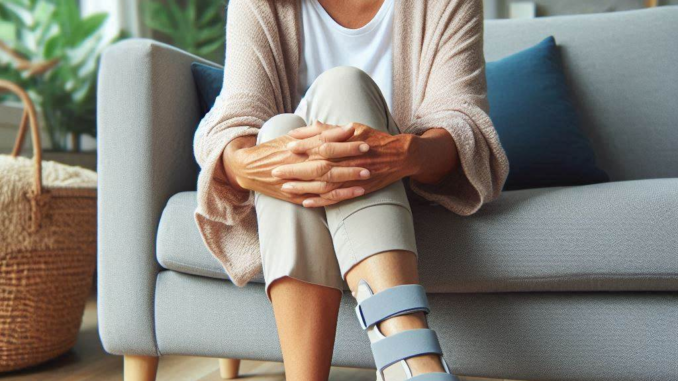
How Long After Hip Replacement Can I Tie My Shoes?
Hip replacement surgery is a life-changing procedure that can significantly improve mobility and quality of life for those suffering from severe hip pain or arthritis. However, the recovery process requires patience and careful adherence to medical advice. One common question that often arises is: “How long after hip replacement can I tie my shoes?” Let’s dive into this topic and explore the journey to recovery, including when you can safely perform this everyday task.
Quick answer: Most patients can safely tie their shoes around 3 months after hip replacement surgery. However, this timeline can vary depending on individual recovery progress and should be confirmed with your surgeon.
My Personal Experience with Hip Replacement
Before we delve into the details, I’d like to share a brief personal anecdote. My Aunt Sarah underwent hip replacement surgery last year at the age of 62. She’s always been an active person, and the inability to perform simple tasks like tying her shoes was incredibly frustrating for her. I remember her determination during recovery, using adaptive tools and following her physical therapist’s advice to the letter. Her journey inspired me to research this topic thoroughly and share the information with others who might be in a similar situation.
Understanding the Hip Replacement Recovery Timeline
Recovery from hip replacement surgery is a gradual process that occurs in stages. Let’s break down these stages to give you a clearer picture of what to expect.
Stage 1: Immediate Post-Surgery (0-2 weeks)
During this initial stage, the focus is on managing pain, preventing complications, and beginning basic movements. Here’s what you can expect:
- Hospital stay of 1-3 days
- Pain management through medication
- Learning to use assistive devices like walkers or crutches
- Starting gentle exercises to improve circulation and prevent blood clots
- Tying shoes: Not possible at this stage – you’ll need slip-on shoes or assistance
Stage 2: Early Recovery (2-6 weeks)
As you transition to home care, you’ll gradually increase your activity level under the guidance of your healthcare team.
- Continued use of assistive devices for walking
- Regular physical therapy sessions
- Performing daily exercises at home
- Gradual increase in walking distance and duration
- Tying shoes: Still not recommended – continue using slip-on shoes or assistive devices
Stage 3: Intermediate Recovery (6-12 weeks)
This stage marks significant progress in your recovery journey:
- Transition from walker to cane (around 6-8 weeks for many patients)
- Increased range of motion exercises
- Return to light household activities
- Possibly returning to work (depending on job requirements)
- Tying shoes: You may begin practicing with guidance from your physical therapist, using adaptive techniques
Stage 4: Advanced Recovery (3-6 months)
By this stage, most patients have made substantial progress:
- Walking without assistive devices (for many patients)
- Resuming most daily activities
- Continuing with strengthening exercises
- Gradual return to low-impact sports or activities
- Tying shoes: Many patients can safely tie their shoes around the 3-month mark, but always consult your surgeon first
Factors Affecting Your Ability to Tie Shoes After Hip Replacement
Several factors can influence how quickly you’ll be able to tie your shoes after surgery:
- Age and overall health: Younger, healthier patients often recover more quickly
- Pre-surgery fitness level: Those who were more active before surgery may have an easier recovery
- Adherence to physical therapy: Consistently following your PT program can speed up recovery
- Type of hip replacement: Anterior approaches may allow for quicker recovery of certain movements
- Individual healing rates: Everyone’s body heals at a different pace
Safe Techniques for Tying Shoes After Hip Replacement

When your surgeon gives you the green light to start tying your shoes, it’s important to use safe techniques to protect your new hip. Here are some tips:
- Use a long-handled shoe horn to slip on your shoes without excessive bending
- Sit in a chair and cross your ankle over your opposite knee, keeping your hip at a comfortable angle
- Consider using elastic shoelaces that don’t require tying
- Practice the “golfer’s reach” – bending your knee and lifting your foot behind you while keeping your operated leg straight
- Use adaptive tools like a reacher or dressing stick to help manipulate your laces
Alternative Footwear Options During Recovery
While you’re working towards being able to tie your shoes, consider these alternative footwear options:
| Footwear Type | Advantages | Considerations |
|---|---|---|
| Slip-on shoes | Easy to put on and take off | Ensure they provide adequate support |
| Velcro-fastened shoes | Adjustable fit without bending | May not be suitable for all occasions |
| Elastic-laced shoes | Look like regular laced shoes but don’t require tying | Might need assistance for initial fitting |
| Step-in shoes | Can be put on using a long-handled shoe horn | Ensure they’re not too loose to prevent tripping |
Exercises to Improve Flexibility for Shoe-Tying
Your physical therapist will guide you through exercises to improve your flexibility and strength. Here are a few examples that may help you work towards tying your shoes:
- Seated marches: Sit in a chair and lift your knees alternately, as if marching in place
- Ankle rotations: Rotate your ankles in circles to improve flexibility
- Gentle hamstring stretches: Sit on the edge of a chair and straighten one leg, gently leaning forward (only as directed by your PT)
- Hip abductions: Lie on your back and slide your leg out to the side, keeping your knee straight
- Seated knee extensions: Sit in a chair and straighten your knee, hold, then lower
Remember: Always consult your physical therapist or surgeon before attempting any new exercises.
When to Seek Medical Advice
While recovering and working towards activities like tying your shoes, be aware of signs that warrant immediate medical attention:
- Sudden increase in pain or swelling around the hip
- Redness, warmth, or drainage from the incision site
- Fever or chills
- Sudden difficulty or inability to bear weight on the operated leg
- Any popping or clicking sensations in the hip joint
Conclusion: Patience is Key in Hip Replacement Recovery
Recovering from hip replacement surgery and regaining the ability to perform tasks like tying your shoes is a journey that requires patience, dedication, and careful adherence to medical advice. While most patients can safely tie their shoes around 3 months post-surgery, it’s crucial to remember that everyone’s recovery timeline is unique.
Focus on following your surgeon’s and physical therapist’s instructions, using adaptive techniques and tools when necessary, and gradually working towards your goals. With time and proper care, you’ll likely find yourself able to tie your shoes and perform many other daily activities with greater ease than before your surgery.
If you have any concerns or questions about your recovery process, don’t hesitate to reach out to your healthcare provider. They’re there to support you every step of the way on your journey to improved mobility and quality of life.


Leave a Reply